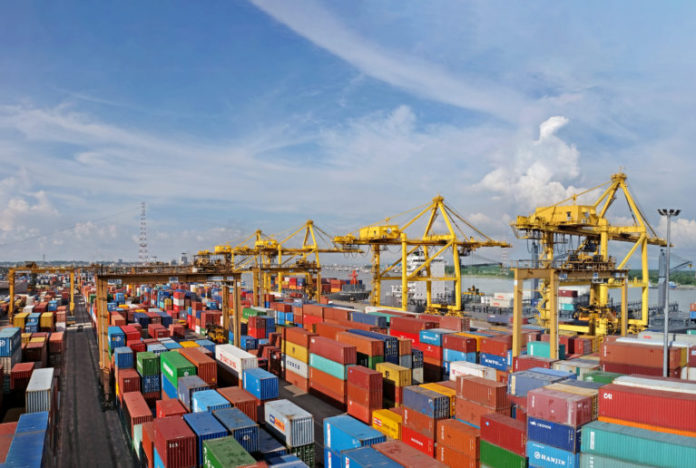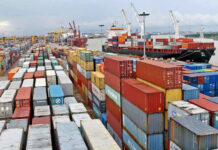According to the Ministry of Commerce, Bangladesh’s export target for the current fiscal year is USD 51 billion. Of this, the export target is 43.5 billion dollars, and the service sector target is 7.5 billion dollars. Readymade garments are at the top of the list of export products. Almost all the goods exported to the international market are transported through Chittagong port. As a result, As a result, when the issue of continuous export of goods has come to the forefront, so has the issue of the capacity of the port.
The ready-made garments sector’s organisation BGMEA and other trade organisations have always raised the issue of increasing the port’s capacity in discussions to achieve export targets. Because the continuous capacity building is essential for a country’s major port. But whether increasing the capacity of Chittagong port alone will pave the way for achieving export targets needs to be discussed.
Let’s take a look at a statistic. Last year (2021), the Chittagong port transported 32 lac TEUs (containers of 20 feet each). Half of this number of cargo containers carrying imported goods arrived in the country and the same number of export cargo and empty containers were transported to other ports of the world through Chittagong port. This means that the same number of containers that have arrived in the country have been transported from the country to the ports of the outside world. What is noteworthy here is that half of the containers shipped from the country through Chittagong port have been shipped by loading, and the other half have been shipped empty without any goods. Because we did not have export products to load in these containers. As a result, there is an opportunity to transport export goods in the existing capacity. Which, Chittagong Port Authority has been saying for a long time.
As Chittagong port acts as a regulatory authority for the transportation of goods for international trade, the issue of increasing the capacity of Chittagong port has always come to the fore. Many governmental and non-governmental organisations are involved with the port in this supply chain. Many companies and organisations including customs, C&F agents, shipping agents, quarantine authorities, freight forwarders, and private ICDs are part of this supply chain. Hinterland connectivity and logistics capabilities are also important issues.
There are now 19 private ICDs in the country. Which handles about 100% of export products and 37 imported products. As a result, the ability of these ICDs to ship goods on time is an important issue. On 26 April last year, BKMEA, a garments sector organisation, expressed dissatisfaction with the capacity of private ICDs in a letter to the State Minister for Shipping Khalid Mahmud Chowdhury. The organisation said that the unloading of goods was hampered by the lack of adequate space and equipment in private ICDs. The goods can be unloaded from the port within two days but it takes six to seven days in ICDs.
In developed countries, unloading goods from ports is not practised. In these countries, cargo containers are taken directly from the port to the warehouse or importer’s yard. Customs and other clerical work are done there. As a result, container and cargo handling inside the port is not a problem. About 70% of the imported goods are unloaded at the yard of Chittagong port. Unstuffing of LCL container products (unloading from container to storage) prolongs the unloading process. Duty and physical inspection of goods are also an important part of the goods unloading activities. Therefore, in order to speed up the activities of the port, the issue of taking the unloading activities out of the port and increasing the number of private ICDs has been discussed for a long time.
Most of the goods handled at Chittagong port are bound for Dhaka. Logistics capabilities and communication systems affect the transportation of goods. Besides, transportation of goods from ICDs is also an important issue. An important headline in the media for the first 15 days of November last year was the stagnation of export goods during the transport strike. On 10 November, a news item in the Bengali version of the Daily Star Online carried the headline ‘Transport Strike: Piles of 9,500 Cargo Containers at 19 Depots’. Transportation has been severely disrupted due to the strike called to protest the rise in fuel prices. Due to the non-arrival of cargo containers from ICD to the port at that time, an example has been made of ships leaving the port jetty without export goods. It also came up in the Daily Star news. In addition, in recent years, the issue of disruption of transport due to transport strikes called by various demands has come up in the media with great importance. As the strike has prolonged the import-export transport, the concerned parties including the port authority have had to gain a lot of momentum to cope with the shock of the strike.
Last month, the holy Eid-ul-Fitr was celebrated. At this time, the issue of container piles became the subject of news on the pages of newspapers again. Due to the Eid holiday, the unloading of goods from the port declined at an unusual rate. Although the number of cargo containers is between three and four thousand during normal times, this number came down to one thousand during the Eid holidays. As the number of containers in the port yard increased, so did the number of ships waiting at the outer anchorage. However, from previous experience, the port authority informed the concerned stakeholders in the local and national newspapers that the activities of the port would be in full swing during the Eid holidays, but the results were not very satisfying. This situation has arisen due to the activities of the agencies and institutions involved in the unloading and shipping of goods being virtually stopped. The port authority had to handle the push.
Therefore, just as it is important to increase the capacity of Chittagong port to cope with the pressures of a growing economy and import-export trade, the capacity, mobility, and uninterrupted service of stakeholders are equally important. If even one part of the supply chain does not work at the same rate, it impairs the functioning of the previous and later parts. As a result, neither side can enjoy the benefits.




